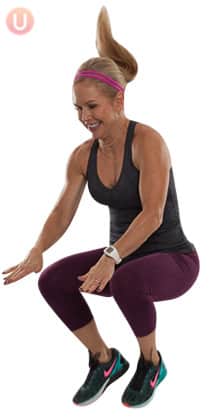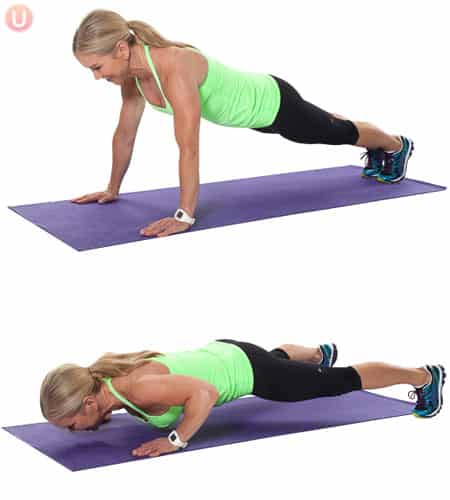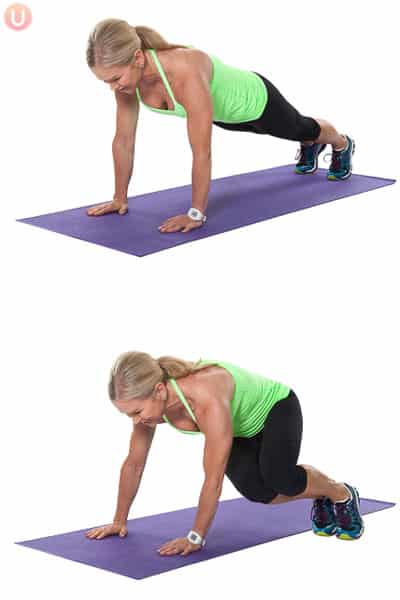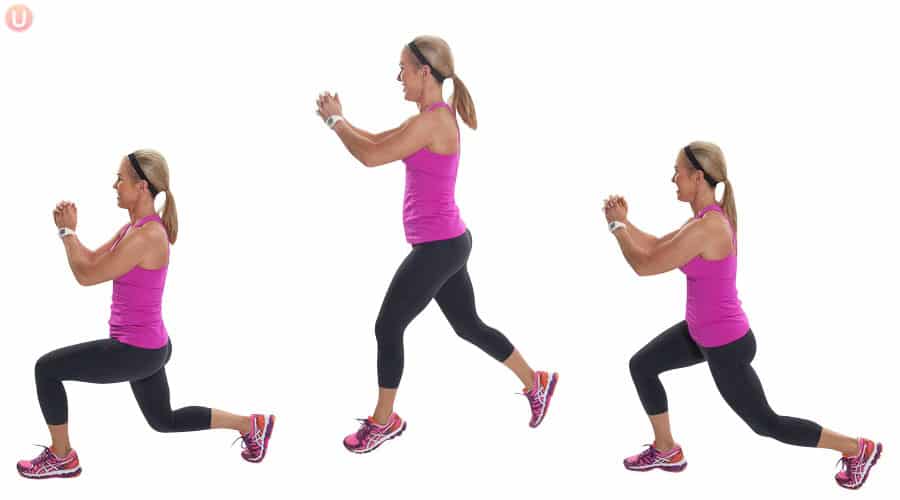This post contains affiliate links. Please see our disclosure policy.
Jumping around as a kid was fun. Jumping around as an adult helps you get fit. We call this plyometric training or, “jump training.” Plyometrics use explosive movements to build strength and to condition the muscles and heart. The exercises themselves are forms of jumping. In essence, you perform an explosive move where your feet leave the ground and each time you land, the muscles get a stretch—allowing you to jump with even more power the next time.
At one time, plyometrics were primarily used by athletes to improve power for their sport, but now they are definitely part of the fabric of the fitness world! Fitness professionals and enthusiasts everywhere use plyometrics as either a stand-alone workout or in parts of other workout programs. Plyometrics boost muscle power, strength, balance and agility—and help you burn calories.
How Often Should I Do Plyometrics?
Plyometrics are a form of strength training so you don’t want to do them every day. Your muscles will need a good 48-hour break in between sessions. If you’re not active now, you may need to start working on your basic fitness first and later have a pro show you how to do the moves properly to ensure effectiveness and avoid injury.
Can I Modify with Low Impact?
Of course you can modify any high impact activity to make it low impact. However, in this case ,by taking away the jumping motions you are essentially taking away the definition of a plyometric. In other words, you might be doing a great exercise, but it won’t be a plyometric workout. That being said, the workout below can be adjusted to meet your needs.
Are Plyometrics Primarily Muscle or Cardio?
Both! Plyometrics are muscle-focused and you are going to gain strength. But plyometrics are also great way to experience anaerobic interval training. Anaerobic intervals increase your cardiovascular capacity and will get you into shape quickly!
I’m Ready! So What’s the Plan?
Ready for a kick-butt plyometric workout? For each exercise below, set your timer and try to go for 30 seconds with a 30 second rest in between. After you make your way through all five exercises, take a two-minute rest. Then, repeat the entire sequence again. Make sure and take a few minutes at the end to stretch.
Begin with one minute of light jogging and stationary squats to warm the body up.
A) Stand with feet hip width apart and knees bent.
B) Jump up and pull knees toward the chest. Engage the abs.
C) Land both feet together softly and with knees slightly bent. Repeat for 30 seconds.
Rest for 30 seconds.
A) Begin in a plank position with your shoulders over your wrists, your feet together, and your body in a straight line.
B) Lower to a push-up while jumping feet to a wide position. Keep abs tight and back straight. Land with spine straight and chest close to floor.
C) Jump your feet back together as you straighten your arms to push up to start. Repeat as many times as possible for 30 seconds.
Rest for 30 seconds.
A) Start in a squat position with body facing the side of the room but eyes looking forward.
B) Jump and flip a full 180 degrees and land in a squat so that body is now facing the other side of the room. Keep eyes forward.
C) Continue to make 180 degree jump-turns for 30 seconds with eyes looking forward and body staying in squat position.
Rest for 30 seconds.
A) Begin in a plank position with your shoulders over your wrists, feet together, and your body in a straight line.
B) From this position, bend your knees and hop both feet up to your left hand, keeping your feet together.
C) Hop back to start position and then repeat to the right.
Perform as many as you can in 30 seconds. Be sure when you jump back to the plank your core stays tight and back doesn’t sag.
Rest for two minutes and repeat from the first exercise
A) Start in a stationary lunge position, right foot in front, with left foot behind resting on ball of foot. Both legs should be bent at a 90-degree angle at the bottom of the lunge.
B) Swing arms and jump as high as you can, switching foot positions while in the air. When you land, left foot will be in front. While in the air, front foot comes back and back foot comes to the front. Land in a bent knee lunge. Repeat. Go quickly but get a full range of motion each time.*
*be careful that feet leave and land at the same time on this move!
Do as many as you can in 30 seconds.
Rest for 30 seconds.
If you liked this workout, put a pin on it!
Like this workout? Then you’ll also want to try our “Jump Around” workout below!









I really live these plyometric moves! I used to do plyometric as a track athlete, and I still do them as a long-distance runner. Thank you for reminding me of them, Chris Freytag.